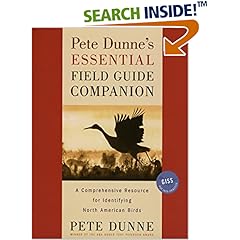The Birder Survey
I decided to put together a little survey for birders. Please copy and paste your responses in the comments or post this on your blog.
What state (or country) do you live in? NJ, USA
How long have you been birding? 6 years
Are you a "lister"? Yep
ABA Life List: 491
Overall Life List: 695
3 Favorite Birding Spots: Sandy Hook, NJ, Cape May, NJ, Barnegat, NJ
Favorite birding spot outside your home country: Costa Rica (it's really the only place I've been)
Farthest you've traveled to chase a rare bird: 2 hours - an unsuccessful chase of a Redwing (a European thrush)
Nemesis bird: Cape May Warbler (no, they don't live in Cape May!)
"Best" bird sighting: Green Violet-ear in NJ
Most wanted trip: Antarctica
Most wanted bird: Ivory-billed Woodpecker
What model and brand of bins do you use?: Nikon Venturer 8x42
What model and brand of scope do you use?: Swarovski AT80HD
What was the last lifer you added to your list?: Buff-breasted Sandpiper
Where did you see your last lifer?: Sandy Hook
What's the last bird you saw today?: European Starling
Best bird song you've heard ever: Winter Wren
Favorite birding moment: The first time I visited a hummingbird feeding station in SE Arizona
Least favorite thing about birding: Birding in the rain
Favorite thing about birding: Leading trips
Favorite field guide for the US: Sibley
Favorite non-field guide bird book: Wild America
Who is your birder icon?: Kenn Kaufman
Do you have a bird feeder(s)? Yes
Favorite feeder bird? Ruby-throated Hummingbird







 Natural Foods
Natural Foods
 Good Luck Food
Good Luck Food

 Sandy Hook has been a hotbed for rarities lately. It seems like one per week is showing up. The most recent one was a
Sandy Hook has been a hotbed for rarities lately. It seems like one per week is showing up. The most recent one was a 



 I arrived for my volunteer day at Sandy Hook today a bit early, so I stopped to do some quick birding. I was pleased to see a group of friends also had the same idea in the same parking lot. It turns out that they were there to see a reported
I arrived for my volunteer day at Sandy Hook today a bit early, so I stopped to do some quick birding. I was pleased to see a group of friends also had the same idea in the same parking lot. It turns out that they were there to see a reported  Pete Dunne's latest tome,
Pete Dunne's latest tome, 

